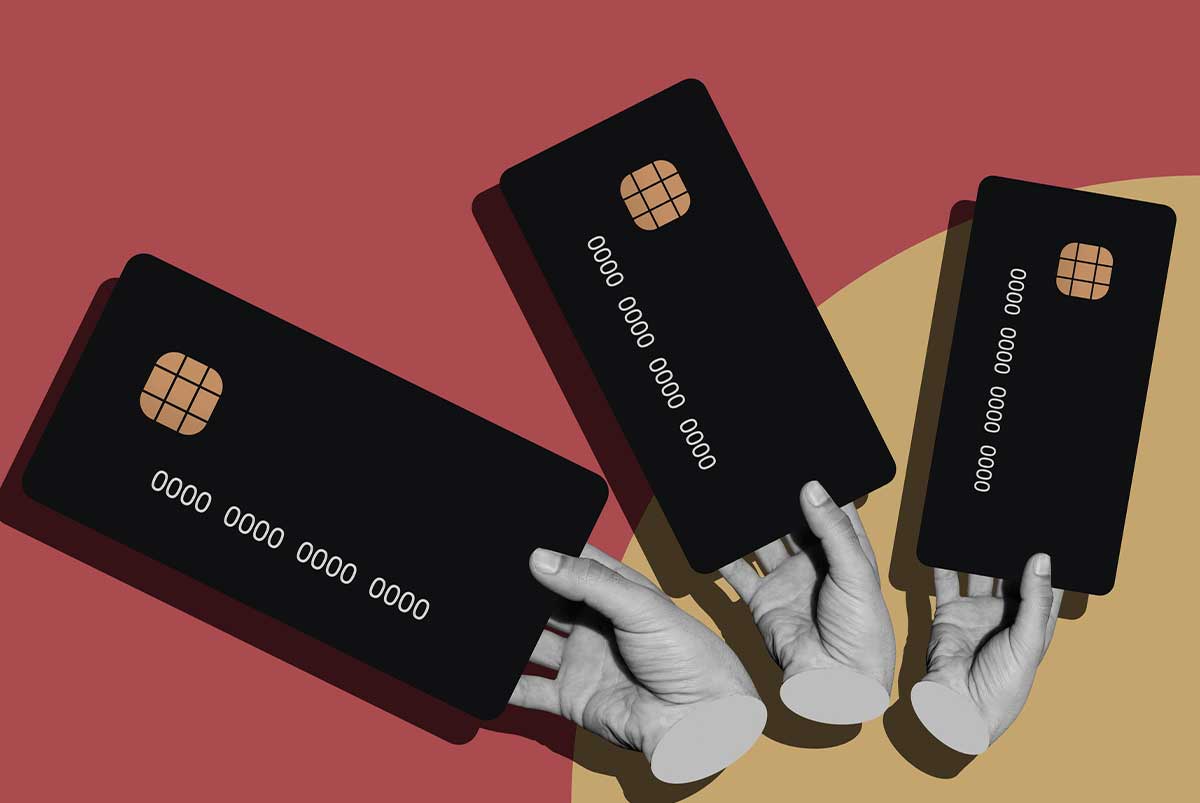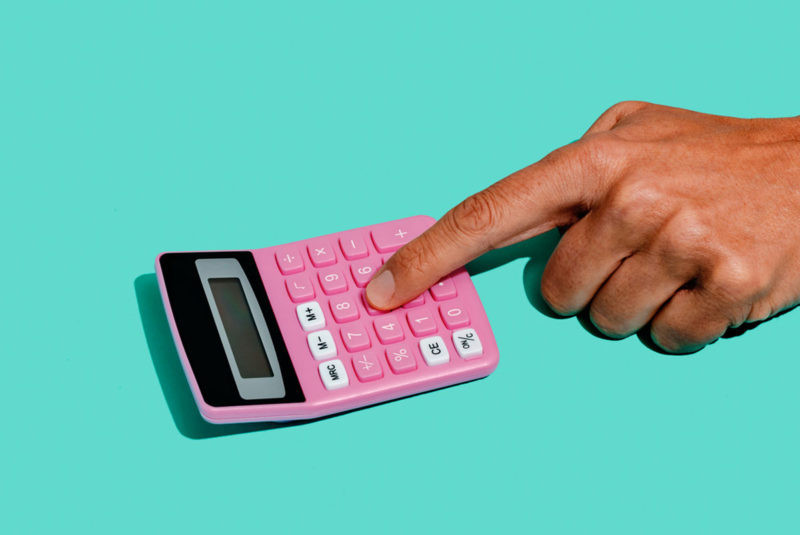What Is a Credit Score?
A credit score is a number that measures how risky you are as a borrower of money. In other words, it’s a measure of your creditworthiness, or how much financial institutions should trust you. Credit scores are calculated based on your past behavior with loans, credit cards, and other financial products.
The higher your credit scores climb, the lower the risk you pose to lenders. Higher scores generally also mean that you can expect better terms when you borrow money. In real-world terms, this means lenders work hard to attract people with higher credit scores. That includes offering loans and credit cards with lower interest rates, low-to-no fees and more extras, like bonuses when you get a new credit card.
You have hundreds of credit scores, not just one. You might look up a credit score and get one number online. But when you apply for a loan, the bank will end up using a different credit score.
For a long time, the FICO® brand of credit scores was the only game in town. FICO®, established by Fair Isaac Corporation, remains the main type of credit score used by lenders to evaluate the credit rating of applicants. When people talk about credit scores they’re usually talking about a FICO® Score. Even under the FICO® brand, however, there are different types of FICO® Scores for different purposes. For example, if you want a loan to buy a house or a student loan, the bank may use a different type of score than if you’re applying for a credit card.
More recently, the three major credit bureaus (Equifax®, Experian™ and TransUnion®) have banded together to create another credit scoring system called VantageScore®. It relies on a slightly different set of weighted criteria than FICO® Scores.
If you get a free credit score on your credit card statement, for example, you can usually read the fine print to find out what scoring model and credit bureau data they’re using.
Credit Score Range
VantageScore® 3.0, 4.0, and most FICO® Scores range from 300 – 850. Under all of these credit scoring models, higher numbers are better.
Older versions of VantageScore® and some other types of FICO® Scores have different numerical ranges. For example, the FICO® 8 Bankcard Score, sometimes used by banks in credit card approval decisions, ranges from 250 – 900.
What’s Not in My Credit Scores?
Let’s clear up some common credit misconceptions. Your FICO® and VantageScore® credit scores only take into account information on your credit reports. They do not consider the following:
- Your income (credit card companies will ask for this when you apply for new credit, though)
- Your specific place of residence
- Your age, race, gender, religion, marital status, or national origin
- Child support/family support obligations
- Whether or not you’re using credit counseling services
What Criteria Do FICO® and VantageScore® Use To Determine Your Credit Scores?
While they weigh certain elements differently, FICO® and VantageScore® determine credit scores by evaluating similar factors that essentially boil down to the following:
- Your payment history
- Amounts owed (particularly versus your overall available credit)
- The age of your credit history
- The types of credit accounts opened in your name (loans, credit cards, etc.)
- New/recent applications for credit
Exactly how these factors impact a given score can vary, but it’s generally safe to assume that your payment history is the biggest consideration, and that’s nearly always followed by your amounts owed/utilization.
We’ve outlined a few of the more commonly used scoring formulas below.
What’s In Your Credit Score?
This chart shows the criteria used to create FICO® scores and their relative importance in your credit score.
FICO® scoring criteria
(Scores range from 300 – 850)
- 35% Payment history
- 30% Amounts owed
- 15% Length of credit history
- 10% New credit
- 10% Types of credit
VantageScore® 3.0 scoring criteria
(Scores range from 300 – 850)
- 40% Payment history
- 20% Credit utilization
- 11% Balances (total amount owed)
- 21% Depth of credit (length of credit history, types of credit)
- 5% Recent credit
- 3% Available credit
VantageScore® 4.0 scoring criteria
(Scores range from 300 – 850)
- 41% Payment history
- 20% Credit utilization
- 20% Age/mix of credit
- 11% New credit
- 6% Balances
- 2% Available credit
Because it’s the more widely used credit score, let’s look closely at each element in the FICO® Score.
The Individual Elements of FICO® Scores
Payment history
Your payment history accounts for 35% of your FICO® Scores, making it the most important component.
How to do well in this category
- Always pay your bills on time: Late payments, collections, charge-offs, bankruptcies, and other negative items in your payment history will hurt your scores.
- Don’t worry about how often you use your cards: You don’t need to use your cards every month to show a positive payment history. Credit scoring models usually look for delinquencies when it comes to payment history, so it doesn’t make much difference if you only use your cards once in a while (as long as you pay on time and keep your card active!).
Amounts owed (including individual and overall credit utilization)
How much debt you’re carrying accounts for 30% of your FICO® Scores. This category takes into account all of your debt balances, but your credit card debt has the most impact here. If you carry a lot of credit card debt compared to your credit limits, your scores will likely suffer. This is why maxing out credit cards may quickly drop your credit scores.
Carrying balances on multiple cards can also hurt your scores, especially if those balances are high relative to your credit limits. The more accounts with balances you have, the worse it is for your credit scores.
How to do well in this category
- Don’t max out credit cards, and keep balances low relative to credit limits.
- Avoid spreading out your debt on multiple credit cards, if possible.
- You may also want to ask for credit limit increases regularly.
- Avoid closing unused credit cards as doing so might trigger an increase in your credit utilization ratio.
Credit file age
How long you’ve had credit influences 15% of the points in your FICO® Scores. What’s important here is that each account is “opened” date on your credit reports.
This category considers factors like:
- How long ago you opened your newest account
- How many years your oldest account has been open
- The number of years each account on your credit report has been open, averaged together
The longer you’ve had credit accounts open, the older your credit history will be. An older “average age of credit” generally equals more points added to your credit score.
Opening several new accounts in a short time can bring down your average age of credit quickly. Every new account you open will also reset the time since you opened your newest account. Both actions could potentially decrease your scores.
Closing an account won’t decrease your average age of credit, at least not right away. Closed accounts remain on your credit reports and will still count toward your credit history. However, closed accounts will eventually come off your credit reports after either 10 years (positive accounts) or around seven years (negative accounts).
When a closed account is eventually removed from your credit reports, it could reduce your average age of credit and possibly the age of your oldest account at that time. Either action might have a negative impact on your credit scores.
How to do well in this category
- Avoid opening new accounts you don’t need, since they’ll bring down your average account age and time since the last account was opened.
- Don’t close old credit card accounts as long as they’re paid off and have no annual fee.
Variety of accounts
Having a variety of different types of accounts shows a healthy, diverse mix of credit and makes up 10% of your credit score points. A healthy mix of credit may include accounts like credit cards (known as revolving debt), auto loans and mortgage loans (known as installment debt).
Having only one type of account, say credit cards only, won’t earn you as many score points as showing that you’re able to manage and maintain a variety of account types such as a car loan, a personal loan, or a mortgage, for example.
How to do well in this category
- If you can manage them responsibly, use at least one credit card so your credit reports will show revolving debt activity.
- Although regular credit cards and retail store cards may be counted as different account types by FICO®, we generally recommend going with regular credit cards.
- If you already have at least one open credit card, applying for new cards you don’t need, just to increase your credit mix, is unnecessary. Applying for additional cards could potentially hurt you more than it helps. Credit mix is a small factor in credit scores already, and each new account shortens your average age of accounts.
- If you don’t have any installment loans and want to maximize points in this category, consider a credit builder loan.
Applications for new credit
Your recent searches for credit are worth 10% of your FICO® Scores. In the credit industry, an application for new credit means a “hard” inquiry on your credit reports and signals that you’re actively looking for credit.
Every time you apply for a new credit card, a new hard inquiry will be added to one or more of your credit reports. Inquiries generally remain on your credit reports for up to 24 months and may impact your credit scores for 12 months.
In general, the more inquiries you have, the riskier you’ll look to lenders, and the lower your credit scores will be. However, there are some notable exceptions.
Credit scoring models don’t treat all hard inquiries equally. If you’re shopping around for a car loan, for example, you might request terms from multiple banks. Each bank will check your credit as part of the application process. Credit scoring models group these inquiries together so they only count as one inquiry when your credit scores are calculated. With newer FICO® Scores, this special treatment applies to auto, mortgage, and student loan inquiries that occur within a 45-day time frame. Lenders understand this process, too.
FICO® Scores don’t extend this special treatment to credit card inquiries. With installment loans, like car loans or mortgages, you have the opportunity to decide whether you want to take the loan or not when you’re approved. When you apply for a credit card, the account will be open once you’re approved, so every time your credit is checked for a credit card application the hard inquiry might affect your FICO® Scores.
VantageScore® credit scores, on the other hand, count all hard inquiries that happen within a 14-day time frame as a single inquiry.
How to do well in this category
- Don’t apply for too many credit cards when you don’t think you have good odds of being approved.
- Research cards carefully and only choose to apply for the ones that will have the most positive impact on your life.
- Avoid applying for a lot of new credit in a 12-month period.
What’s a Good Credit Score or a Bad Credit Score?
The question of who determines a good or bad score has all sorts of incorrect answers. It’s not the credit bureaus, it’s not FICO®, and it’s not VantageScore®. None of these companies use credit scores to lend money.
Lenders (like credit card issuers) use credit scores to help predict risk, and their opinions are the ones that matter most in the end. Every lender is going to have a slightly different definition of a “bad,” “fair,” “good,” and “excellent” credit score.
This is a credit score range breakdown currently used by FICO®:
| Credit Score Range | Ranking |
| 800–850 | Exceptional |
| 740–799 | Very Good |
| 670–739 | Good |
| 580–669 | Fair |
| 300–579 | Poor or Bad Credit |
| No credit history | Limited/No Credit |
For basic FICO® scores, “good” typically starts at 670; for VantageScore®, good scores start at 700.
Scores below 670 aren’t necessarily bad, but they’re unlikely to score you the best available credit card deals. The best interest rates are reserved for consumers who have great credit history. So, even if you’re approved for a card you may get better terms if you have better credit.
Excellent credit scores can lead to:
- Easier approval for loans
- Better interest rates
- Lower fees
- Better repayment terms
- Lower insurance premiums
- No down payment on utilities
- And much more …
If your scores are below 660, which is the generally recognized dividing line between prime and subprime, then you’re in a position to either be denied credit or find yourself saddled with very high interest rates. If you have poor or no credit, consider using secured credit cards to help build up your credit history.
Why are my credit scores different at each credit bureau?
Equifax®, Experian™ and TransUnion® — it’s easy to lump all three of these agencies into one group and assume that because they all do the same thing. They must be partners, right?
In reality, these three entities are separate companies — separate, competing companies. And as competitors, they do not share credit information or transmit data between themselves (except when they’re required to do so, as with fraud alerts).
Each of the three credit reporting agencies compiles, maintains and manages roughly 220,000,000 credit files in their individual databases. There’s no law that says these companies must share or cross-reference their data. And finally, because they are three competing companies, they don’t compile, code, or categorize their data in exactly the same ways.
This is one reason why your credit report from Experian™ won’t look the same as your credit report from Equifax® or TransUnion®. And because they don’t share their data, the information the credit bureaus have in their databases might not be identical either. Even if your three credit reports contain the same exact accounts, there’s no guarantee that those accounts are updated at the same time each month across the credit bureaus.
The Biggest Threats to Your Credit Scores
Late payments
If you want to maintain high credit scores then you cannot miss payments. Late payments are a deal breaker where good credit scores are concerned.
What many consumers don’t understand is just how damaging even one past-due account can be to their credit scores. Credit scoring models like FICO® and VantageScore® predict the likelihood that a consumer will become 90 past due on any credit obligation within the next two years. Anything you do that suggests you’re willing to miss payments is usually the first step toward lower credit scores.
If you are currently past-due on an account, or if your credit reports show a history of late payments on other credit obligations, the odds are much higher that you will become past-due again in the future. Credit scoring models will penalize you for that elevated risk with lower scores. Lenders will use those lower scores to either deny your applications or offer you higher rates and more restrictive terms.
Too much credit card debt
The idea that late payments damage credit scores is an easy concept for most consumers to understand. However, the fact that having too much credit card debt can also lower a consumer’s credit scores is often surprising. The assumption is that as long as you make your payments on time then all is well.
Yet credit card debt is capable of lowering a consumer’s credit scores almost as much as late payments. Around 30% of the points in your FICO® and VantageScore® credit scores come from the debt category. While not all of that 30% is based on credit card utilization, your credit card balance-to-limit ratio is a significant factor within the category. Credit scoring models reward consumers for maintaining low balances relative to their credit limits.
Co-signing
Co-signing is by far one of the most dangerous things you can do with your credit reports and credit scores. When you cosign for a loan with someone else, you are equally liable for the debt. It’s just as serious as if you applied for the account on your own. There is no difference.
If the primary borrower misses payments on the account, the co-signer’s credit reports and credit scores will also suffer the consequences.
If the primary borrower charges a large balance on a credit card and runs up a high utilization ratio, then again, the co-signer’s credit reports and credit scores will likely suffer.
If the loan or credit card goes into default, the co-signer may be pursued for payment by debt collectors, as if he were the primary borrower. Should the lender or collection agency decide to sue over the outstanding balance, the co-signer could be on the hook once again.
If you are being asked to co-sign for a loan, then the lender believes it’s too risky to do business with the primary borrower by himself.
Are you really willing to put your credit on the line for someone that a lender believes is an unacceptable credit risk? If you are, just be sure that you’re fully prepared to pay for the credit obligation yourself since the odds are high that the primary borrower won’t manage the account properly. If you want to help a loved one out, consider adding him or her as an authorized user instead.
Third-party collections
If a lender or creditor can’t get you to pay your credit obligation as promised, it may turn the account over to a collection agency. At that point, you’ll likely end up with a collection on your credit reports.
Collections can remain on your credit reports for up to seven years from the date of default on the original account. Collections are never good for your credit scores.
Repossessions
For auto and recreational vehicle loans (like boats or motorcycles), the lender has the option of repossessing the collateral if you fall behind on your payments.
Note, voluntary repossessions are roughly as damaging to your credit scores as involuntary repossessions.
Foreclosures/short sales
If you don’t pay your mortgage, the lender will eventually foreclose in order to take back the home. Short sales, on the other hand, happen when a lender agrees to let you sell your home to a third party for less than you owe and consider the debt as paid.
Regardless of what many real estate agents claim, a short sale is just as bad as a foreclosure from a credit report and credit score standpoint. Short sales are reported as charge-offs or settlements, and both are accurate because the loan wasn’t “paid in full” according to the original loan terms.
Judgments
If you don’t pay a debt, a creditor or debt collector may be able to sue you for the outstanding balance. Judgments are public records, but as of now they don’t show up on your credit reports.
Depending on your state laws and a judge’s ruling, judgments may give collectors the ability to garnish wages or seize bank accounts. They can also make it difficult for you to qualify for certain types of loans, like mortgages, where lenders commonly perform public record searches during the application process.
Tax liens
Tax liens are yet another public record you’ll want to avoid. If you don’t pay the government, the debt will never go away.
Like judgments, tax liens don’t currently show up on credit reports. Still, tax liens can cause you problems if you apply for certain types of loans, like mortgages.
Negative narratives
Narratives are the statements that appear on your credit reports associated with credit entries. For example, an account might be listed with the note “partial payment plan.” The data about an account on a credit report may seem neutral, but lenders consider language like this a red flag. Some narratives, such as “repossession,” “charge off,” etc. may have a negative credit score impact too.
Myths and Facts about Credit Scores
Will reissued credit cards hurt my credit score?
When you report a credit card as lost or stolen, your card issuer will issue you a new credit card. Cards may be re-issued due to fraud or when a new bank takes over the account as well. The impact a re-issued credit card has on your credit reports depends on how the card issuer reports the new account to the credit bureaus.
Often when a credit card is reissued, the lender will report the “date opened” on the new account as the same date the original account was opened. The credit limit and balance on the newly reissued account will likely be the same as well.
If the card issuer reports a reissued card as a new account with the same original open date, your credit scores should not be hurt. In some cases, your average age of accounts might even increase and you could experience a small credit score boost.
There is a possibility, albeit slight, that a newly re-issued credit card might have a brand new “date opened.” If that happens, your credit scores could go down a modest amount.
Again, the score impact has to do with how the new account affects your average age of credit (and possibly the age of your newest account). If the reissued card lowers your average age of credit or creates a younger “newest account”, it might lead to lower credit scores. Most credit card issuers are aware of this problem and will avoid it by keeping the same date opened throughout all the reissues of the card.
In addition to the reasons mentioned above, you might also receive a new credit card in the mail because:
- Your card is about to expire.
- Your credit card was damaged (i.e. the magnetic strip or chip no longer works properly).
- You requested for your card to be updated to a different design.
However, in these instances you’re not being issued a new credit card account, merely a new card (typically with the same number). So, your credit reports shouldn’t change at all.
Will inactive credit cards hurt my credit score?
The fact that an account hasn’t been used in some time isn’t negative or positive where credit scores are concerned. Indirectly, however, an inactive credit card account can impact your credit in a negative way. It all depends on the actions a card issuer takes if you stop using a credit card account.
In the past, it was difficult to tell (by looking at a credit report) whether a credit card account was active or inactive. Credit reports now show trended data — a look back at your last 24 months of payment behavior on credit card accounts. With this information, you can look at a credit report and decipher whether or not you’ve been using a credit card account. Even so, credit scoring models don’t consider whether or not you’re actively using your credit cards each month when they calculate your credit scores.
What can impact your credit reports and scores, however, is how your credit card issuer reacts to your decision to stop using an account. If you stop using a credit card the issuer may eventually decide to close the account. This could raise your revolving utilization ratio and potentially harm your credit scores.
If you have open credit cards that you don’t use, you can keep them active by making an occasional charge. In many cases, using your cards about once every three to six months should usually keep them active and open.
Will my credit score go down if I’m denied a credit card?
When you apply for credit, you give a creditor permission to pull one or more of your consumer credit reports and credit scores, normally a FICO® Score. When the lender pulls your credit report from a credit bureau, it leaves evidence of the credit access behind called a credit inquiry. A credit inquiry is simply a record of who pulled your report and on what date.
This type of credit inquiry can potentially have a negative effect on your scores. But, if it does, the impact will usually be minor. Inquiries generally stay on your credit reports for up to two years, but they only affect your FICO® Scores for 12 months.
Other than the credit inquiry, there is no other information about the application on your credit report. The credit card issuer’s decision to deny your application is not reported. As such, the denial has no impact on your credit scores.
Will I have perfect credit if I pay my cards on time?
Always paying your credit cards on time will definitely be good for your credit, but it’s not enough to have perfect credit.
There are several other factors involved in creating your credit scores aside from your credit history:
- Amounts owed (how much credit card debt you have)
- Length of credit history
- New credit
- Types of credit used
Why Don’t I Have a FICO® or VantageScore® Credit Score?
Credit scores are based on the information found on your credit reports. If your credit reports are blank, you won’t have credit scores. That said, even if you have some information on your credit reports, it doesn’t necessarily guarantee that you’ll be eligible for a credit score. Credit scoring models have specific minimum requirements that you must satisfy in order for a score to be generated.
If you have a credit report but aren’t able to generate a score, the accounts on your credit report are too new. You might also be ineligible for a credit score if the information on your credit report isn’t recent enough. This may happen to consumers who haven’t used credit in a long time or have opted to avoid credit altogether.
In either of these cases, you would likely see a notice of “insufficient credit history” instead of receiving an actual credit score.
Minimum requirements for a FICO® score
FICO® Scores are the most common brand of credit score lenders use in the United States. In order for a FICO® Score to be generated, your credit report must meet the following minimum requirements:
- Your credit report must have at least one account that’s been open for six months or longer. It only takes one account to qualify for a FICO® Score. Your credit report must have at least one undisputed account that has been updated in the last 6 months. If you only have one account, and the account is in dispute, you won’t have a FICO® Score.
- Your credit report must be free of “deceased” indicators — including accounts that you might possibly share with another person that has been reported as “deceased” to the credit reporting agencies. If there is any record of you or a joint account holder being “deceased,” a FICO® Score will not be generated.
Possible reasons why you don’t have a FICO® score
Based on the requirements above, here are some examples of why you might not have a FICO® Score:
- You don’t have any current accounts open.
- The accounts on your credit report are too new. They were recently opened and are all less than six months old.
- The accounts on your credit report haven’t been updated or have shown no activity in the last 6 months.
- If all of the eligible accounts — accounts that DO meet the minimum 6-month age and recent activity requirement — are currently in dispute, you won’t have a FICO® Score.
The Short Version
- Having a good credit score is important because it can help make your financial dreams come true
- You likely have more than one credit report since there are three major credit bureaus: Equifax®, Experian™ and TransUnion®
- If you have a bad credit score (think: 300 – 579), there are ways to improve it




